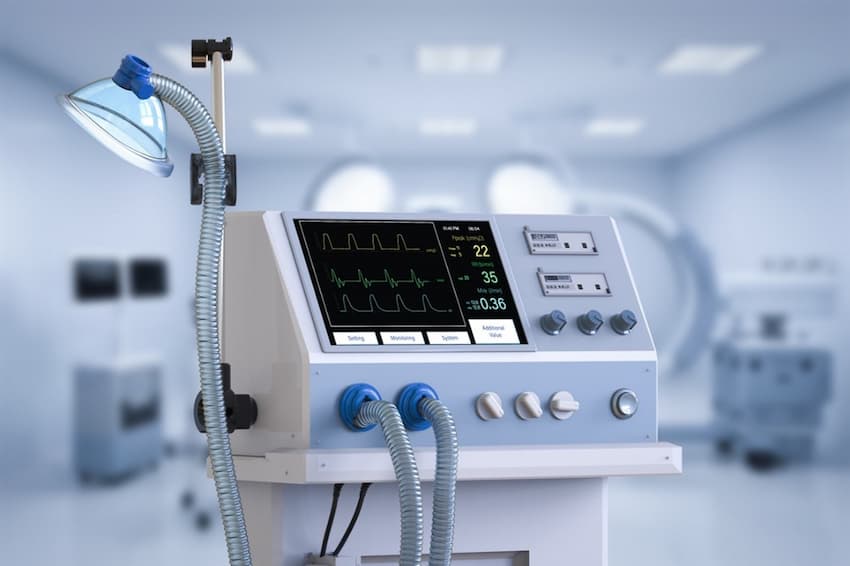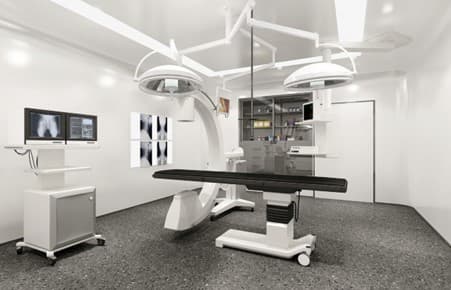Hospital Applications of Springs & Pressings

In this blog, we at European Springs & Pressings will unravel the relationship of springs in healthcare. From precise surgical instruments to intricate mechanisms supporting advanced imaging devices, the job of springs is to maintain the delicate balance between precision and durability. We will also delve into their diverse application, uncovering the various types that have become indispensable in healthcare technology. Understanding the bond between springs and healthcare equipment is a fascinating journey across the intersection of engineering and the science of medicine.
 What Springs Are Commonly Used in the Medical Industry?
What Springs Are Commonly Used in the Medical Industry?
At the core of the medical industry lies a trio of indispensable springs:
· Gas springs
These resilient spring types are essential to specific medical equipment, ranging from catheter clips and ventilators to filters for breathing apparatus and protective visors. Their vital importance cannot be overstated, as they contribute to the correct and efficient functionality of devices that directly impact patient care. To ensure the longevity and reliability of each product, they must adhere to the highest standards, dedicating particular attention to detail.
Among these, gas springs emerge as the most versatile type within the healthcare industry, finding application in a multitude of medical equipment. From patient beds to continuous positive airway pressure machines to positive pressure ventilators and pressure regulators, their adaptability is a solid testament to their efficacy. Without these springs, many implants and medical devices, such as inhalers, heart valves, pacemakers, and insulin pumps, would be compromised.
What’s more, recognising the stringent cleanliness standards of the medical springs, it is worth mentioning the use of stainless steel alloys in the production. This material not only meets high-standard hygiene requirements but also ensures easy cleaning, which is a critical attribute in sterile environments. As bespoke spring manufacturers, we may turn to Platinum-Tungsten and Platinum-Iridium, exploring alternative materials that mirror the characteristics of stainless steel alloys to align with the unique demands of specific medical endeavours. Our dedication to precision and quality reflects our understanding of the pivotal role these springs play in advancing healthcare technology.
 Ventilators
Ventilators
As we mentioned above, many medical devices and their efficiency rely on springs. One prime example is ventilators, crucial in respiratory care and life support, whose demand in 2020 increased exponentially on a global scale. In ventilators, springs contribute to the precise control of airflow, pressure regulation, and the overall reliability of these life-support devices. Let’s see in detail what spring types are involved and what they are used for.
Tension Springs in Valve Mechanisms: tension springs find application in valve mechanisms. They create the necessary tension to regulate the opening and closing of valves, controlling the flow of air or oxygen to and from the patient. The precision and reliability of tension springs are fundamental in maintaining the accuracy of air delivery, a critical aspect of ventilator performance.
Compression Springs for Pressure Regulation: these springs are often used in pressure regulation systems within ventilators. They help manage and control the pressure of the delivered air, ensuring that it meets the specific requirements of the patient’s respiratory needs. The compressibility and resilience of these springs are essential to the responsiveness and accuracy of pressure adjustments in the ventilator.
Gas Springs for Adjustable Features: by offering a controlled and smooth movement, gas springs allow flexibility in the positioning of certain components of the ventilator. This adaptability is crucial for healthcare professionals to tailor ventilator settings in order to meet patients’ specific needs.
Given the life-saving nature of ventilators, the reliability and longevity of their components, springs included, are of utmost importance. Springs used in ventilators must adhere to strict quality standards to ensure they can withstand continuous and often demanding usage. The choice of the appropriate material, such as stainless steel, is therefore paramount as durability gets enhanced and the risk of corrosion minimised.
 Precision in Diagnostics: Imaging Devices
Precision in Diagnostics: Imaging Devices
In medical imaging, where technological advancements continually reshape the landscape of diagnostics, springs and pressings represent a cornerstone of precision. The delicate mechanisms within Magnetic Resonance Imaging (MRI) machines, which capture detailed images of internal structures, rely on the balance provided by these springs. They improve the precision of the moving parts, ensuring the device captures accurate diagnostic imaging. The stability imparted is indispensable to the effectiveness of MRI technology in providing vital insights into the human body.
Expanding beyond MRI machines, they are also essential to the functionality of X-ray tables, where many components collaborate to acquire detailed images with minimal patient discomfort. The controlled movement facilitated by springs within X-ray tables allows for the precise positioning of patients, enabling healthcare professionals to obtain precise diagnostic results.
Finally, once again, gas springs deserve a special spotlight. In the context of modern Computed Tomography (CT) scanners, they play a pivotal role in the creation of adjustable features that elevate the diagnostic process. For instance, they facilitate the adjustment of the scanning bed, allowing healthcare practitioners to position patients with unprecedented accuracy. This not only enhances the diagnostic capabilities of CT scanners but also contributes to the overall comfort and safety of patients undergoing imaging procedures.
The continuous innovations in spring technology not only augment the precision of diagnostic imaging devices but also foster advancements in patient-centric care.

European Springs’ High-Quality Commitment
As we saw, the springs used in the world of medicine are often tiny, yet their impact on health and wellness is huge. These crafty components support healthcare professionals in improving lives, making surgical procedures safer, disease management easier, and recovery quicker.
At European Springs & Pressings, we take great pride in ensuring that all our clients in the medical sector possess the right instruments to save lives across the world all year round. That’s why we use our extensive expertise as spring manufacturers to guarantee the highest quality materials across our entire spring range. Check out our Spring Catalogue or contact us to learn how we can assist you.
 What Springs Are Commonly Used in the Medical Industry?
What Springs Are Commonly Used in the Medical Industry? Ventilators
Ventilators Precision in Diagnostics: Imaging Devices
Precision in Diagnostics: Imaging Devices